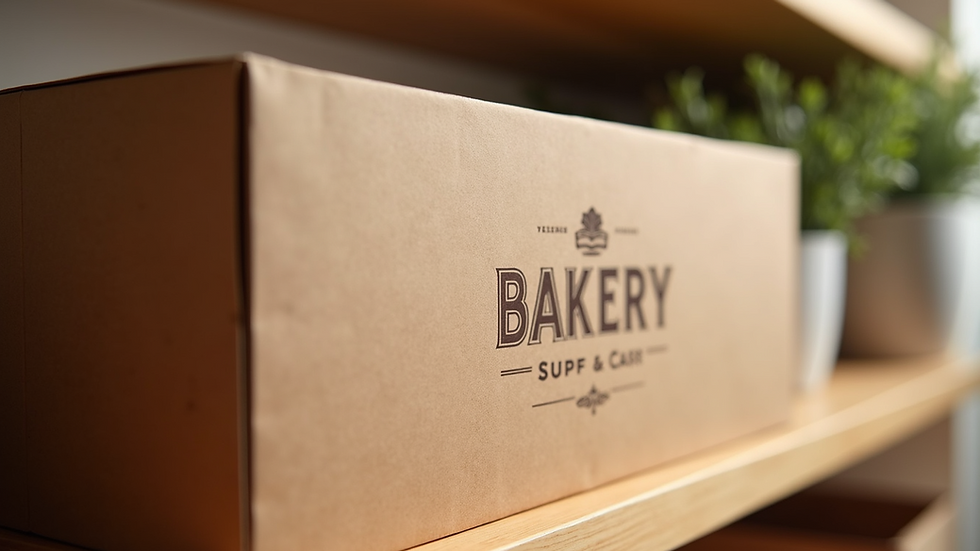6 HOT TRENDS IN THE F&B INDUSTRY
- Adarsh Gupta
- Mar 29, 2022
- 4 min read

The food and beverage companies (F&B) faced some daunting challenges by 2020 during the epidemic — particularly those related to delivery, procurement, and final mileage. Housing orders make shopping frustrating and risky, making it difficult to stay away from the community. Dietary restrictions forced people to make more food at home, often with basic foods that were long-lasting and easy to maintain. Functional grocery stores have turned to e-commerce for online ordering. As the epidemic continued, F&B companies re-evaluated their supply chains and business models and invested in new technologies to make them stronger and faster.
Here are a few key crazes that we expect to impact the sector by 2022.
Experiential Dining
The outdoor restaurant, beer gardens, pre-packaged food from small shops or grocery stores, and limited menu offerings help sponsors transcend microwave food. These types of food utility models allow consumers to move out of the kitchen while living in a safe environment, which is still a priority for many.
While it is already a tradition in the sense that people accept food delivery and delivery, these practices will become common practice by 2022, allowing donors to create their homemade entertainment. Restaurant chains with a pre-existing idea of providing delivery and delivery options without communication before the start of the epidemic became stronger.
Smart gadgets continue to ignite 'epidemic kitchen'
The food and beverage industry is changing rapidly due to new technologies that are widely used by manufacturers. Digital technology and the growth of Industry 4.0 create a host of opportunities, as well as challenges, for food and beverage manufacturers.
These technologies, which include the Internet of Things (IoT), advanced data analysis and cloud, intelligent sensors, have the potential to continuously transform food-producing plants and beverages. They offer benefits such as improved product quality, reduced power consumption, and customized processes. Consistently, using them is essential to keep you competitive and to meet ever-changing consumer preferences.
To make meals more fun, consumers turn to meal kits
What’s new is the food kit game, and possibly a picture of its future, grocery retailers have entered the arena. Such supermarkets do so by designing their programs or partnering with effective online food kit services. This pair of grocery stores and supermarkets seem to be the image found on the arm that is needed. Consumers of the food kit in the store have increased by 2.2 million households in less than a year, resulting in a 60% increase in that line. Complete sales of gourmet food kits throughout 2019 reached $ 93 million. Improving the recipes for this dual-platform comes with its own set of challenges. For example, as food selection options change constantly, there is a need for a continuous flow of new, exciting dishes from the test kitchen. Then, there is the perfect balance of speed, variety, quality, and ease - and do it twice with each recipe.
Ghost Kitchens Thrive, Buffets Struggle
The ghost kitchens, the concept of a restaurant with no public space for sponsors to eat or download orders, are completely modeled
on the concept of delivery. Users create a product with a menu, and then improve their openness on social media and elsewhere. They often rent kitchen areas to prepare their meals and sign up with popular delivery apps in hopes of getting orders.
Of concern to the restaurant industry are those business models located near the buffet line. Many self-made restaurants have filed for bankruptcy last year and some have closed down a few of their facilities. That those who are left will be able to eradicate the virus is one thing; whether the skittish sponsors will return later is another.
Reduced Sodium and sugar
Do you remember when clean labels were the norm? Pure label style is not getting much air these days because it has become a thing of the past. Consumers are now considering the health benefits of those ingredients for clean labels, in particular.
Although salt and sugar are visible and generally considered natural, the high concentrations of these two ingredients indicate a red flag for consumers. Low sodium content is unpleasant and those containing reduced sugar will have a high impact.
Classic Flavour Combinations
Each year, certain radical or unusual trends make up the list. Not surprisingly, many disappeared as they exploded at the scene.
Expect to make spices by 2022, with hot peppers and other unusual, earthy flavors. Spicy sauces, mustards, and other spices will accompany entrees, all of which are delicious from honey.
While some unusual flavors can make their mark, without a doubt, consumers are creatures of luxury and reach for the ordinary. That has never been truer than at the time of the epidemic when old-fashioned foods such as soup, delicious snacks, and mac and cheese were among the favorites.
CONCLUSION…
The food and beverage sector is a vibrant and multifaceted part of our society. The key to innovative practice is to look at the activities of other new businesses and their new products and campaigns. One can access this internally or you can use a trending identification service such as Trend Watching. Either way, the opportunity lies in the ability to identify growing trends, predict emerging expectations, and quickly develop products to position your company in terms of customer expectations!




“I recently came across mcdmenu.us while looking for updated McDonald’s prices, and it’s actually really helpful. The site shows the full menu with accurate prices and easy navigation — great for anyone who wants to check before ordering.”
F&B trends like meal kits, reduced sodium, and experiential dining mirror consumer demand for health, variety, and convenience. McMenu Guide follows this shift by offering insights on McDonald’s menu, prices, and nutrition. It empowers customers to make informed choices, aligning with modern dining preferences for transparency and personalization.